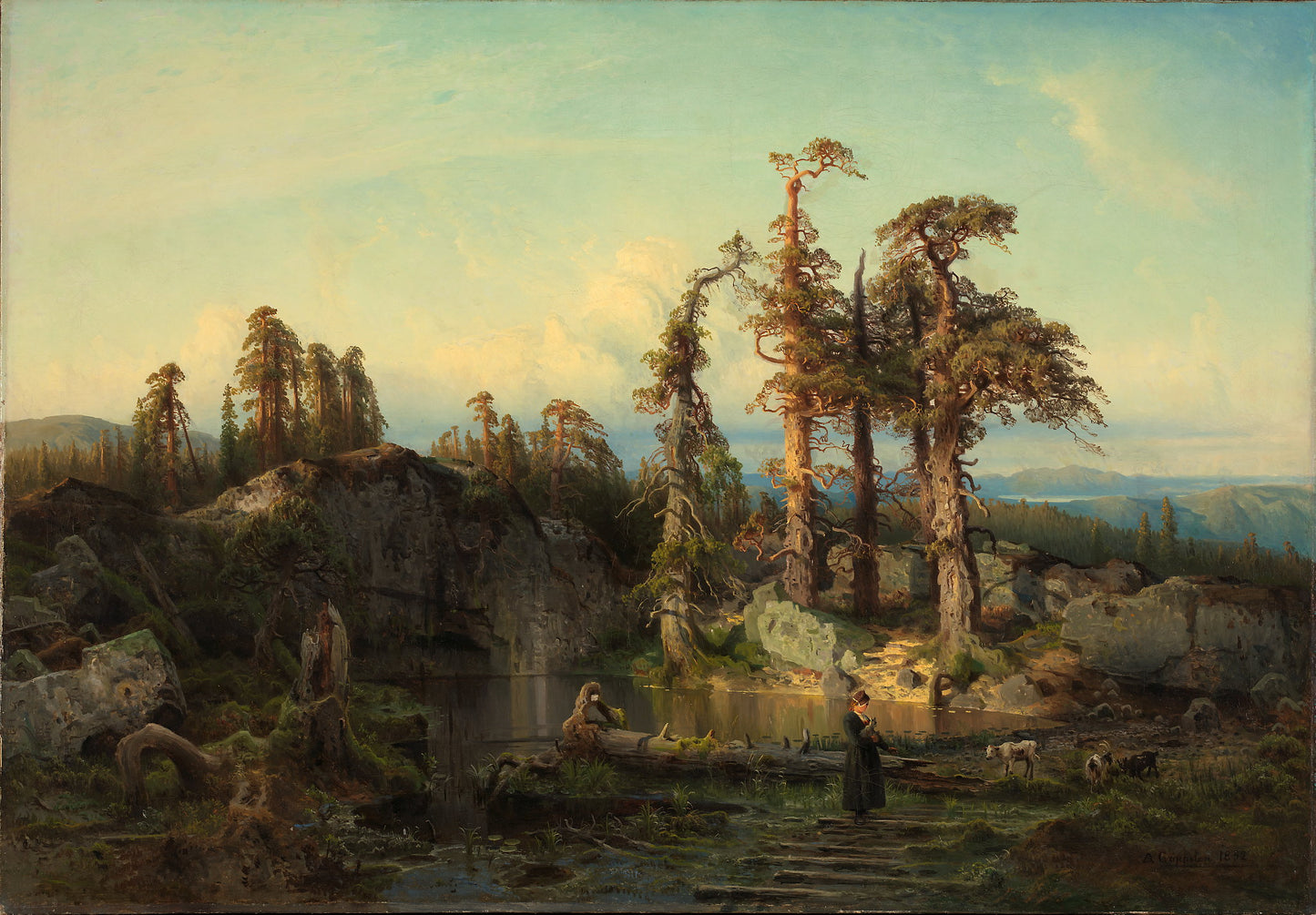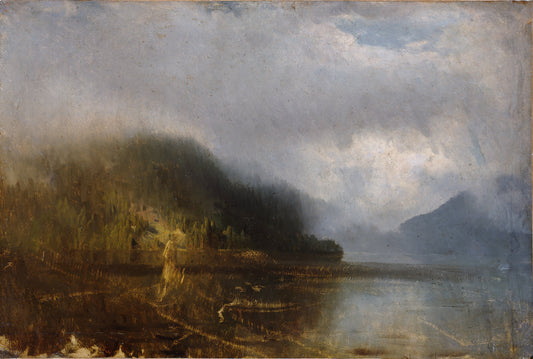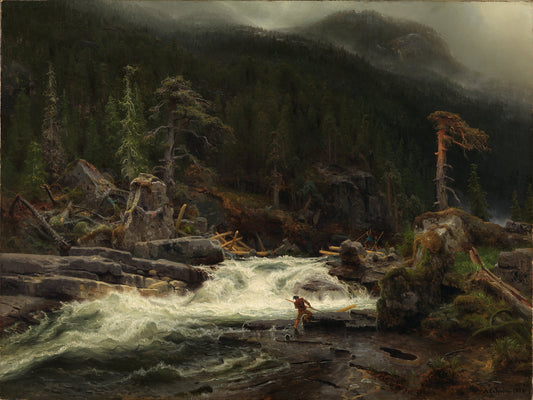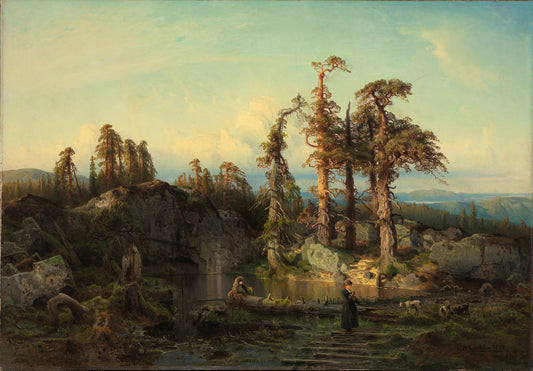August Cappelen
Skogtjern in lower Telemark
Skogtjern in lower Telemark
Couldn't load pickup availability
Art reproductions with authentic colors and details. Posters are printed on 230g Litho White Matt photo paper with white border and logo. Artprints are printed on 260g Museum Natural Rag 100% cotton paper without white border and logo. Produced to order in our own print lab. From our exclusive collaboration with the National Museum.
About the original: Date: 1852
Other titles: Tarn in Telemark (ENG)
Designation: Painting
Material and technique: Oil on canvas
Technique: Oil
Material: Canvas
Dimensions: H 108 cm x W 155.5 cm
Subject: Visual arts
Classification: 532 - Visual arts
Motif: Landscape
Acquisition: Gift from Diderik Cappelen 1852
Inventory no.: NG.M.00199
Part of exhibition: Art 3. Works from the collection 1814-1950, 2007 - 2011
Art and non-art in the National Gallery. The clean-up April 1942, 1942
Registration level: Single object
Owner and collection: The National Museum of Art, Architecture and Design, Visual Art Collections
Photo: Høstland, Børre
Shipping and returns
Shipping and returns
Shipping: We deliver to Scandinavia, the EU, the USA and several other countries. Please contact us if your country is not listed and we will try to arrange delivery.
Delivery time: 2-5 days within Norway, 7 days in Europe, 14 days globally.
Packaging: Our products are made to order and sent rolled in environmentally friendly packaging.
Customs Fees: International orders may be subject to customs fees, which are not included in shipping costs.
Return policy: You can return images within 14 days. See our returns page for more information.
Secure Payment: We never store your payment details. See our privacy policy for details.

See all works
-
Høyfjell, winter
Vendor:August CappelenRegular price From 150,00 NOKRegular priceUnit price per -
Forest water with fog
Vendor:August CappelenRegular price From 150,00 NOKRegular priceUnit price per -
Waterfall in lower Telemark
Vendor:August CappelenRegular price From 150,00 NOKRegular priceUnit price per -
Skogtjern in lower Telemark
Vendor:August CappelenRegular price From 150,00 NOKRegular priceUnit price per

August Cappelen
August Cappelen was a Norwegian painter born in Skien in 1827 and died in Düsseldorf in 1852. He showed an early talent for art, and his mother, who was a skilled draftsman, guided him in his early years. In 1846, Cappelen went with Hans Gude and JF Eckersberg on a study trip to Gudbrandsdalen, which was of great importance to the young painters.
In the autumn of the same year, Cappelen went to Düsseldorf and became a student at the art academy there. He remained there until 1850, with the exception of the winter of 1848-49 when he stayed in Christiania. In the summer of 1847 he visited Sogn and Hardanger and met a group of German Schirmer students. Cappelen is considered one of the earliest mature and personal Norwegian painters of his time. He belonged to the Düsseldorf School in its Norwegian branch, and JW Schirmer was decisive for his development as a painter and landscape artist.
Cappelen had a harmonious life without financial worries or social obstacles to his artistic career. He was musical and loved flowers and lush vegetation, and his many letters provide insight into his character and artistic development.






